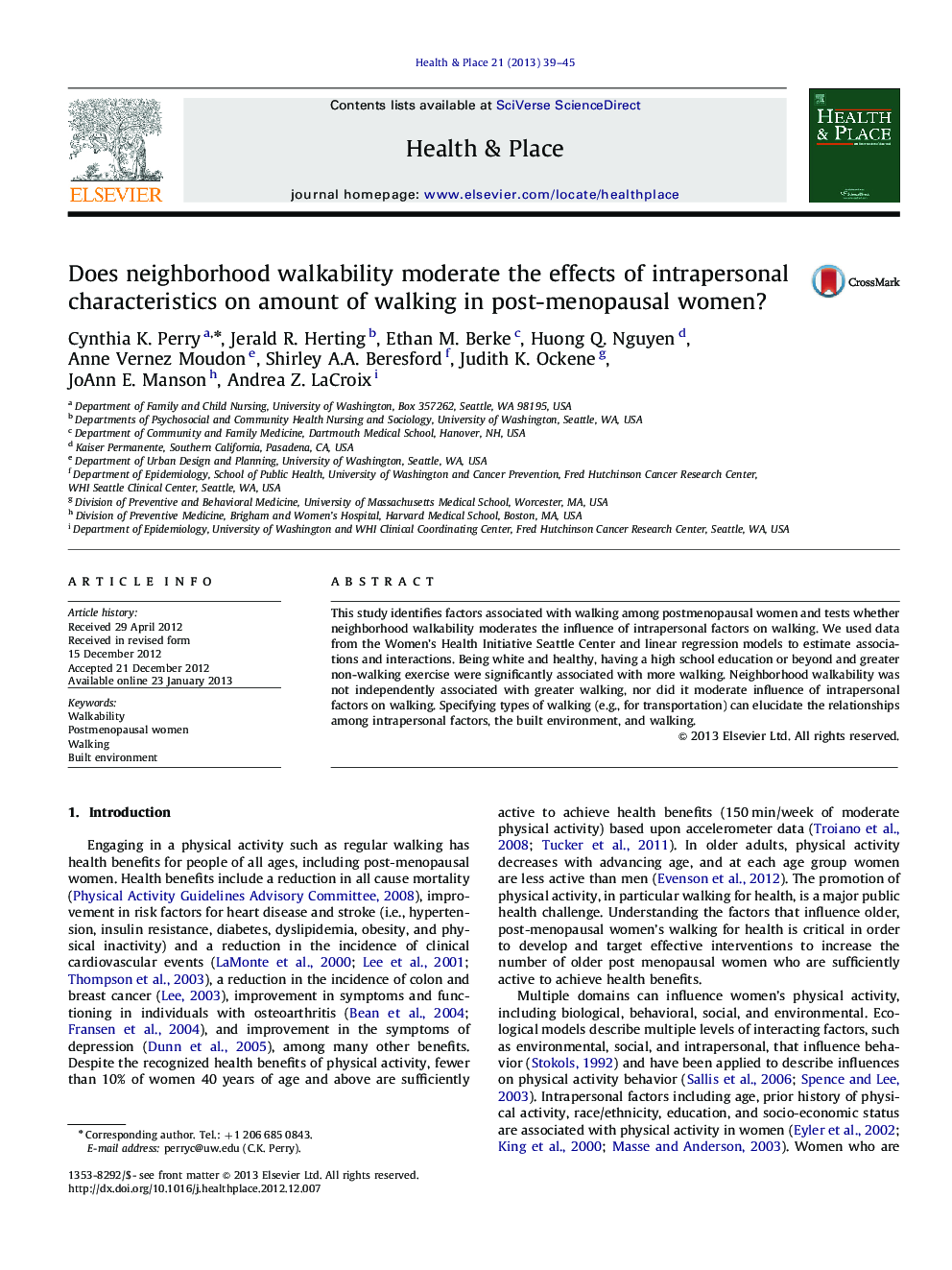| Article ID | Journal | Published Year | Pages | File Type |
|---|---|---|---|---|
| 1048643 | Health & Place | 2013 | 7 Pages |
This study identifies factors associated with walking among postmenopausal women and tests whether neighborhood walkability moderates the influence of intrapersonal factors on walking. We used data from the Women's Health Initiative Seattle Center and linear regression models to estimate associations and interactions. Being white and healthy, having a high school education or beyond and greater non-walking exercise were significantly associated with more walking. Neighborhood walkability was not independently associated with greater walking, nor did it moderate influence of intrapersonal factors on walking. Specifying types of walking (e.g., for transportation) can elucidate the relationships among intrapersonal factors, the built environment, and walking.
► Being white and healthy were associated with greater energy expended on walking. ► A high school or higher level of education was associated with greater energy expended on walking. ► Women who engaged in more non-walking METS of physical activity also expended more METS walking. ► Neighborhood walkability was not associated with walking in a sample of postmenopausal women.
